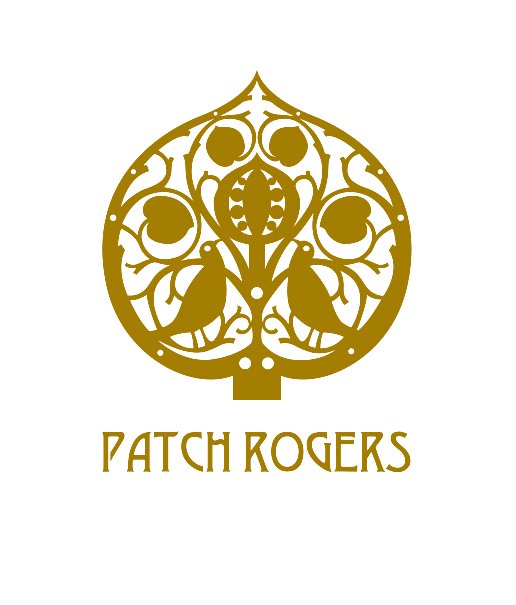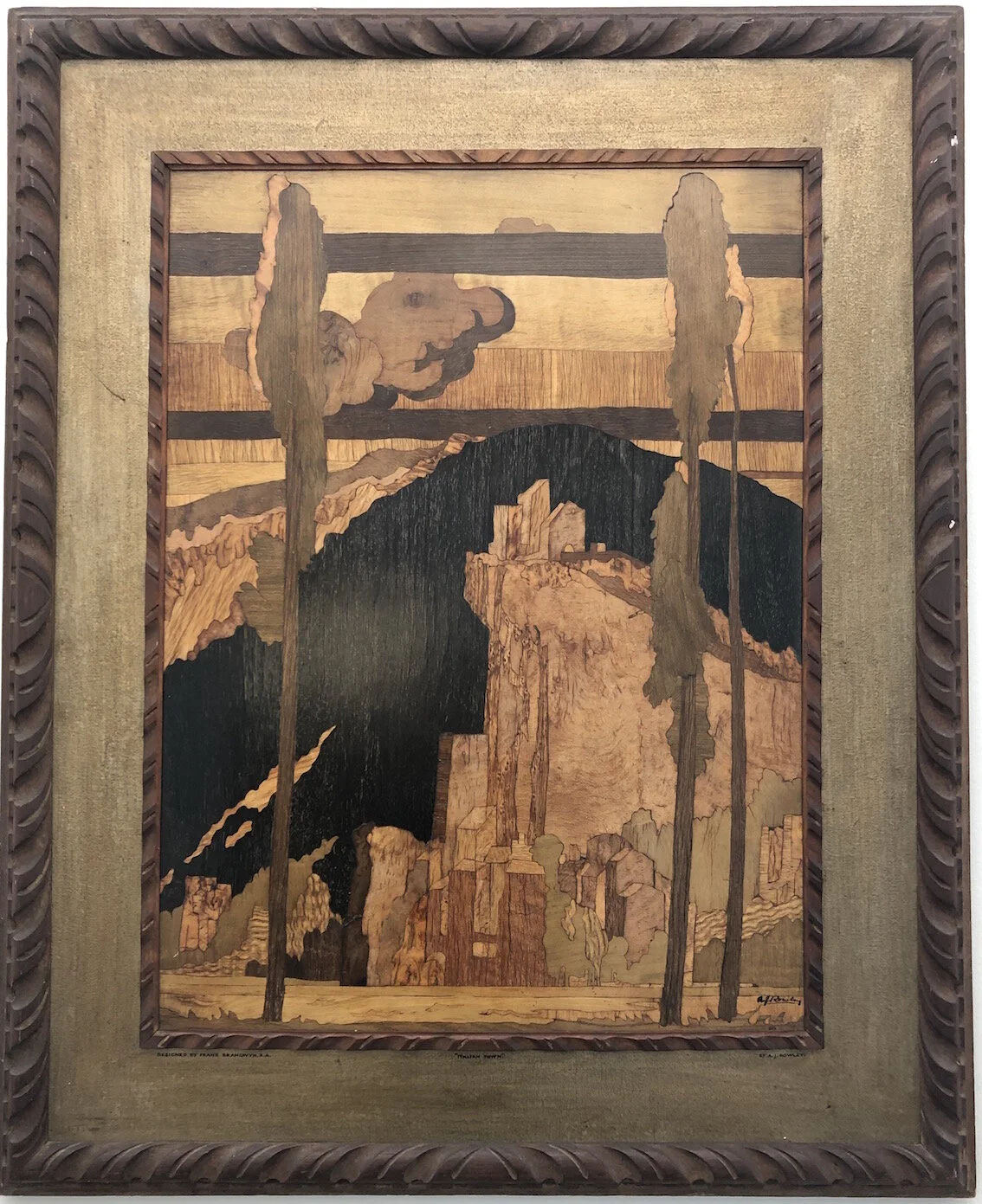ROWLEY GALLERY PANEL designed by Sir Frank Brangwyn
ROWLEY GALLERY PANEL designed by Sir Frank Brangwyn
Framed inlay panel depicting an ‘Italian Town’
It is signed by A J Rowley and was designed by Frank Brangwyn RA
The Rowley Gallery was founded in 1898 by Albert James Rowley (1875-1944) and his wife Emma Hamm as a small business specialising in picture framing. Their first premises were at Silver Street, Kensington and the Gallery undertook framing work for local artists, national galleries and museums, including Leighton House and the National Portrait Gallery. During the Great War Albert expanded his business to include decorative inlay panels, screens and mirror designs. Rowley employed various artists to design for him, his most famous: Sir Frank Brangwyn and his most prolific: William Chase. The numerous designs by these artists and others including Robert Anning Bell, Henry Butler, F H Tate, W J Palmer Jones and Horace Mann Livens reflect the diversity of the designs and the skill with which Rowley and his team of craftsmen were able to create the stylised inlay work associated with the Gallery. There is evidence that panel designs were retailed by Liberty & Co and they were associated with Heals, holding an Exhibition in The Mansard Gallery in 1920. It is unknown how many panel and mirror designs were made, but catalogues reveal that these would probably have been in the hundreds.
Several exhibitions ensued around the 1920s and by the 1930s the Gallery had moved into furniture production, where they were renowned for their silver-leaf furniture and interior schemes. They exhibited internationally and their reputation was highly acclaimed. With expansion the business premises moved to Kensington Church Street and these were rebuilt in 1933 with a startling ‘Art Deco Modernist’ facade. Three enormous panels designed by Sir Frank Brangwyn were installed above the new shop. By 1934 Rowley is known to have employed at least 6 cabinet makers, 3 French polishers 5 paint shop workers and 5 seamstresses
Unfortunately this building was destroyed by an incendiary bomb in 1941. The panels survived, only to be later destroyed by fire, whilst in store at a Barn in Essex. The Rowley Gallery was later sold and remains a picture framing business in Kensington Church Street.

